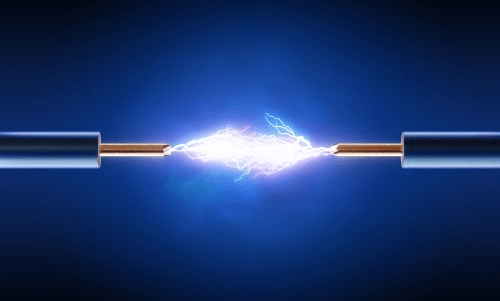7.26.21 – SSI – By Bob Dolph

You’ve heard the old gum commercial saying, “double your flavor, double your fun?” Well, in security circuits, if you double the voltage from 12V to 24V, you truly could double your fun. Why? Let’s find out.
One of the best practices goals of every technician should be not just acting on a particular technology, but understanding why a certain technology. This is why this month I have decided to take a closer look at why it may be advantageous to use a 24-volt system over the typical 12-volt system.
You’ve heard the old gum commercial saying, “double your flavor, double your fun?” Well, in security circuits, if you double the voltage from 12V to 24V, you truly could double your fun. But the question for inquisitive techs is, why? Let’s find out.
First, let me give an example. Someone has specified and you have installed an electrified door strike. You were provided single pair 22-gauge cable, a 12V power supply and a 12V door strike. Once installed, you find the new strike is not working. You replace it and that one does not work either. What is wrong? What can you do to fix the problem?
To start, we need to take a close look at a couple of old-time rules. One is Ohm’s Law and the other is Kirchhoff’s Voltage Law. Understanding these theories is critical for any tech who wants to truly understand basic circuit theory. As you will see, these laws are applied to almost every aspect of system design, and especially in troubleshooting practices.
For best practices you must know them inside and out. If you need to bone up on these laws a good tutorial source is Khan Academy.
Let’s get back to our problem with the door strike. It appears that we have only two options. One is if you have an extra free pair in the cable you could double them up to offer less resistance in this long cable run. Don’t forget, according to Kirchhoff, the cable has resistance and may be dropping enough voltage so the door strike cannot work properly.
Nice try, but in this case that is not an option. Another is to pull new and heavier gauge cable. However, this was a very long and difficult cable run to install, so it is not an option.
Don’t forget the title of this column, “Double the Voltage, Double the Fun.” Many devices today have the option of operating under both 12V and 24V. Taking a closer look at the power supply and door strike you notice that both have a 12/24V switch. No, it cannot be that simple! By switching both the door strike and power supply to the 24V option, the door strike works fine.
Now, what happened? It is time to bring in Ohm’s Law: E(voltage)=I(current) X R(resistance). Remember from your algebra days? If you raise the value on one side of an equation, you must raise it on the other proportionally to keep the equation balanced.
Well, we can agree that for the most part the resistance of this circuit (cable and strike) remain constant, then doubling the voltage (E) allows us to double the current (I) on the other side of the equation/circuit. Now, by doing this the door strike will have enough current to operate even if the cable gauge did not increase. It did not need to.
Hopefully, now you have gained an extra appreciation for Ohm and Kirchhoff. Simple things like a bad termination can cause a high resistance point in your alarm circuit. This will cause a high voltage drop and steal available voltage meant for other devices in the circuit.
To troubleshoot this, you would need to take your digital multimeter and check for this high voltage drop. Don’t assume it is a bad device in the circuit causing the problem, it could easily be bad workmanship.
I picked on electrified door hardware for my example because they are usually more demanding of power. However, you may also run into 24VAC (alternating current) devices. Many falsely think that the AC feature helps with our problem above, but I am sorry to say it does not.
The use of AC is usually due to low-cost strike solenoids and motors, less relay contacts erosion, and better arc suppression. Lower cost AC solenoids work on impedance (AC’s version of resistance) while DC solenoids work on the resistance of the coil wire. There is also less electromagnetic interference. Don’t forget with you DC solenoids to protect devices when the coil field collapses by using a back EMF diode.
These days most fire alarm systems are 24V. Camera systems often offer the option of 24V as well.
(Courtesy WAGO)
Tool of the Month
It is crazy the number of ways I have seen techs try to splice multiple wires together.

Now you have a neat and reliable method with the Splice Connector from WAGO. Not only do you get quick and easy connections, but it makes your install neat and tidy.
